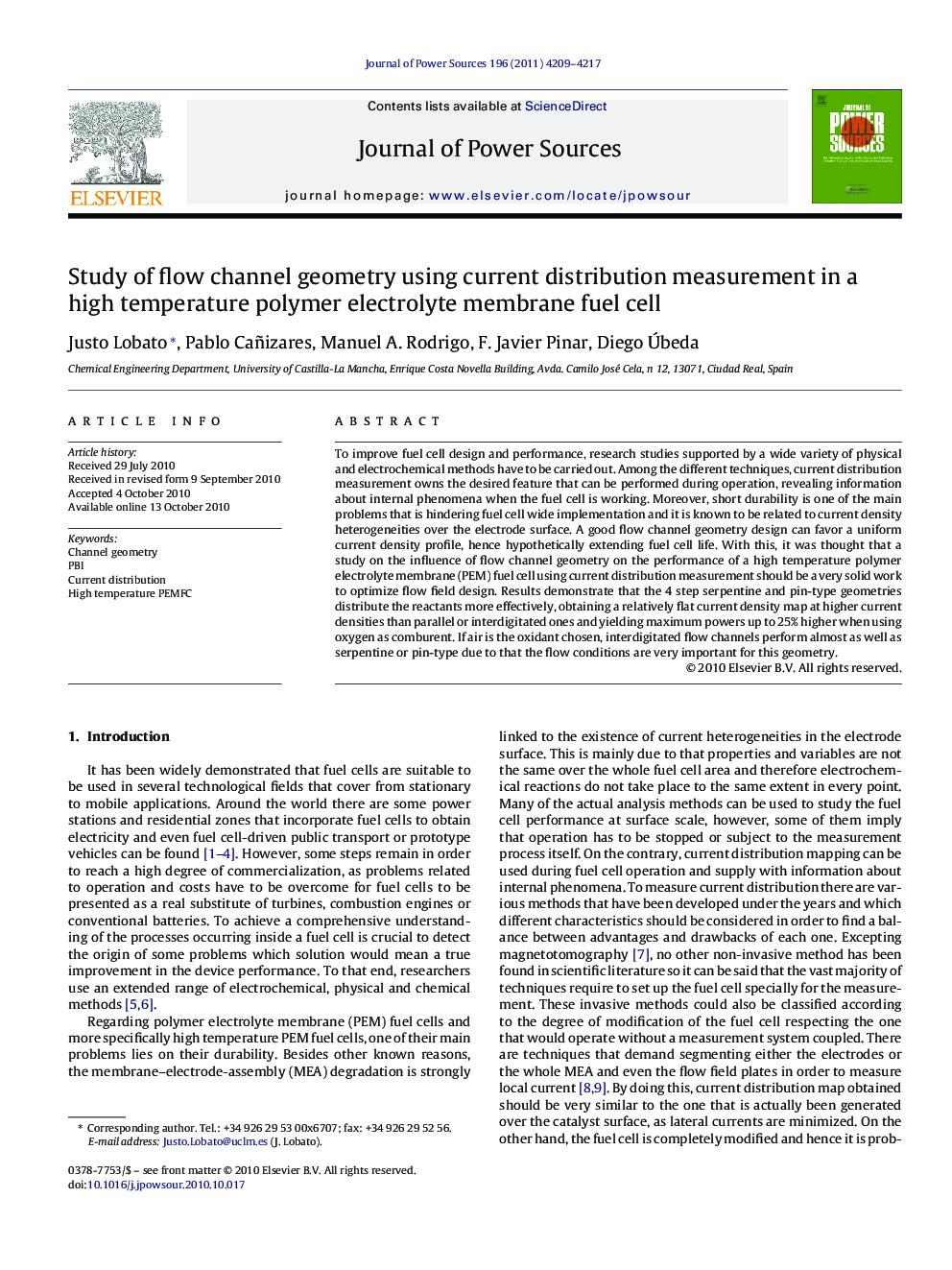| Article ID | Journal | Published Year | Pages | File Type |
|---|---|---|---|---|
| 1289115 | Journal of Power Sources | 2011 | 9 Pages |
Abstract
To improve fuel cell design and performance, research studies supported by a wide variety of physical and electrochemical methods have to be carried out. Among the different techniques, current distribution measurement owns the desired feature that can be performed during operation, revealing information about internal phenomena when the fuel cell is working. Moreover, short durability is one of the main problems that is hindering fuel cell wide implementation and it is known to be related to current density heterogeneities over the electrode surface. A good flow channel geometry design can favor a uniform current density profile, hence hypothetically extending fuel cell life. With this, it was thought that a study on the influence of flow channel geometry on the performance of a high temperature polymer electrolyte membrane (PEM) fuel cell using current distribution measurement should be a very solid work to optimize flow field design. Results demonstrate that the 4 step serpentine and pin-type geometries distribute the reactants more effectively, obtaining a relatively flat current density map at higher current densities than parallel or interdigitated ones and yielding maximum powers up to 25% higher when using oxygen as comburent. If air is the oxidant chosen, interdigitated flow channels perform almost as well as serpentine or pin-type due to that the flow conditions are very important for this geometry.
Related Topics
Physical Sciences and Engineering
Chemistry
Electrochemistry
Authors
Justo Lobato, Pablo Cañizares, Manuel A. Rodrigo, F. Javier Pinar, Diego Ãbeda,
